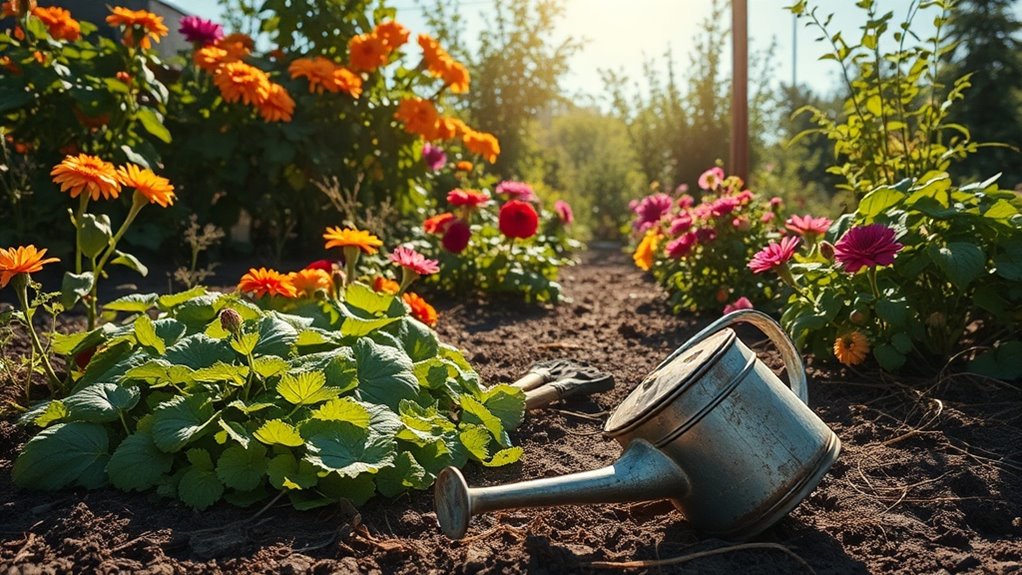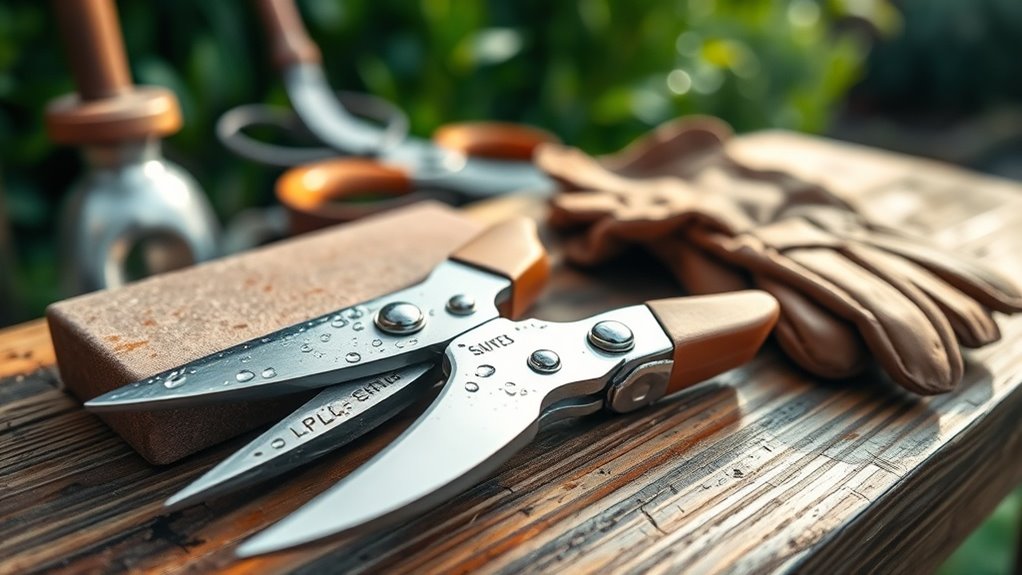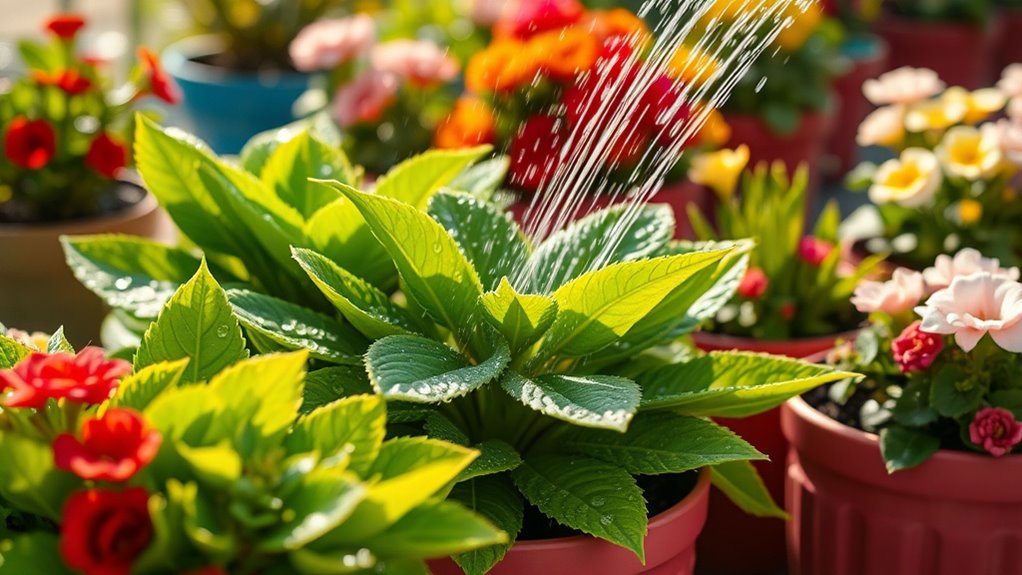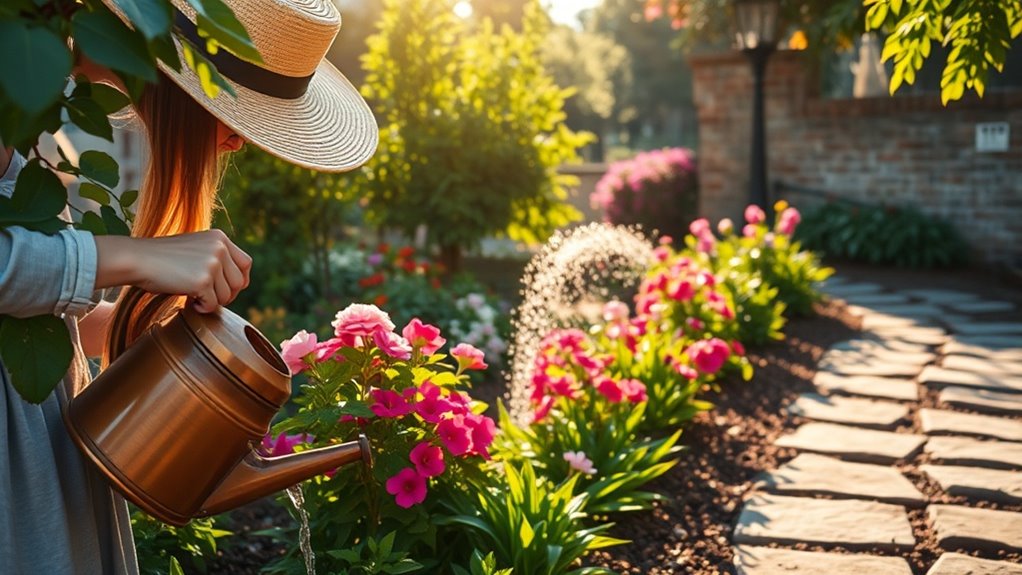Gardening Mistakes That Cost You Time and Harvest
When you garden, it’s easy to overlook certain crucial aspects that can cost you both time and harvest. Neglecting soil quality can lead to nutrient deficiencies, while incorrect watering may cause root issues. You might be surprised how overcrowding plants affects their growth and overall yield. Learning to navigate these common gardening pitfalls can mean the difference between a thriving garden and a struggling one. What other mistakes could undermine your gardening success?
Ignoring Soil Quality
When you dive into gardening, it’s easy to overlook soil quality, especially when excitement drives your planting choices.
Neglecting this crucial element leads to common gardening mistakes, such as poor drainage and nutrient deficiencies.
A soil test can reveal pH levels and essential nutrients, allowing you to amend your soil effectively.
Be aware that signs of struggling soil can include compacted dirt, poor water absorption, and a lack of microbial life, which can all severely hinder plant growth.
Prioritizing soil quality sets the foundation for a thriving garden, ensuring successful growth.
Overwatering or Underwatering Plants
One of the most common mistakes in gardening is mismanaging the water supply, whether it’s through overwatering or underwatering your plants.
Overwatering leads to root rot and nutrient leaching, while underwatering causes stress, wilting, and stunted growth. To avoid this, regularly check soil moisture levels and adjust your watering schedule based on the specific needs of each plant and environmental conditions. Additionally, overwatering plants can lead to detrimental effects on plant health, making it crucial to understand the signs and symptoms of excessive moisture.
Improper Plant Spacing
Although it might seem insignificant, improper plant spacing can hinder your garden’s overall health and productivity.
When plants are too close, they compete for nutrients, water, and sunlight, leading to stunted growth and increased vulnerability to pests and diseases.
Conversely, spacing them too far apart can waste valuable garden space.
To maximize your yield, follow specific spacing guidelines for each plant variety you choose. Additionally, common gardening mistakes can often stem from neglecting proper spacing, so be sure to educate yourself on the best practices for your specific crops.
Failing to Rotate Crops
Failing to rotate crops can severely impact the long-term health of your garden. Continuously planting the same type of crop in one spot depletes specific nutrients in the soil and promotes pest and disease buildup. Additionally, crop rotation is an effective strategy that can help maintain soil fertility and disrupt the life cycles of pests.
Neglecting Pest Management
While a garden may initially thrive, neglecting pest management can quickly lead to a host of problems that undermine your efforts.
Pests can damage plants, reduce yields, and invite diseases. By regularly monitoring for signs of infestations and implementing preventive measures, like companion planting or organic pesticides, you’ll create a healthier environment that fosters growth and productivity while saving you time and frustration in the long run. Additionally, incorporating an effective organic pest mix can help eliminate pests quickly without the use of harmful chemicals.
Choosing the Wrong Plants for Your Climate
Choosing plants that aren’t suited for your climate can undermine your gardening efforts, leading to stunted growth or complete failure.
To ensure success, research your USDA hardiness zone and select plants that thrive in your temperature range, humidity, and soil type.
Additionally, consider seasonal variations; native species are often best suited, as they’ve adapted to local conditions, reducing maintenance and increasing resilience.





